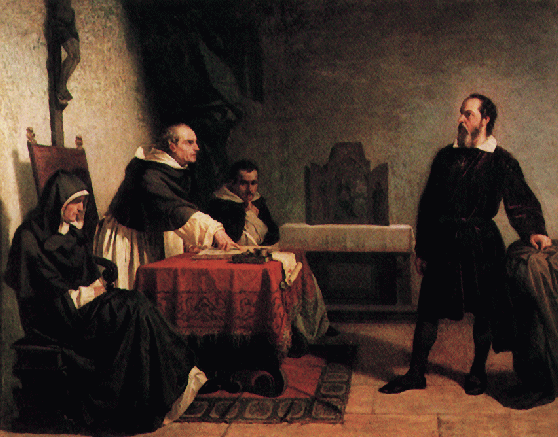

Galileo in front of the Roman Inquisition, after a 1857 Painting by Cristiano Banti. Galileo was summoned to Rome by the Inquisition on 23 September 1632, following publication of his Dialogue in February of that year. He arrived in Rome on 13 February 1633, and was housed in the Tuscan embassy. He was called to the Holy Office (the Inquisition's headquarters) and first interrogated on 12 April 1633, sent back to the Tuscan embassy on April 30, and called in again and detained on May 10 and June 21. While detained in the Holy Office, Galileo was housed in apartments usually occupied by Inquisition officials, rather than in the usual prison cells.
On 22 June 1633 Galileo was forced to kneel in front of the Inquisition and recant his belief in the Copernican planetary system and the motion of the Earth. He was condemned to life imprisonment, ostensibly for having disobeyed a 1616 injunction by Cardinal Bellarmino "...not to defend or teach the Copernican doctrine...". The very next day the sentence was commuted to perpetual house arrest, which was rigidly upheld to the end of Galileo's life. Galileo's Dialogue was also put on the Index of Prohibited Books, together with the books by Copernicus and Kepler treating of the heliocentric system, where they all remained until 1835. Only in 1992 did the Roman catholic Church formally admitted to having erred in dealing with Galileo.
De Santillana, G. 1955, The crime of Galileo, University of Chicago Press.
Redondi, P. 1987, Galileo Heretic, Princeton University Press.
Westfall, R.S. 1989, Journal for the History of Astronomy, 20, 1-23
Fantoli, A, 1994, Galileo, Vatican Observatory Publications [distributed outside of Italy by the University of Notre Dame Press].
-Written and last revised 21 April 2000 by paulchar@ucar.edu.